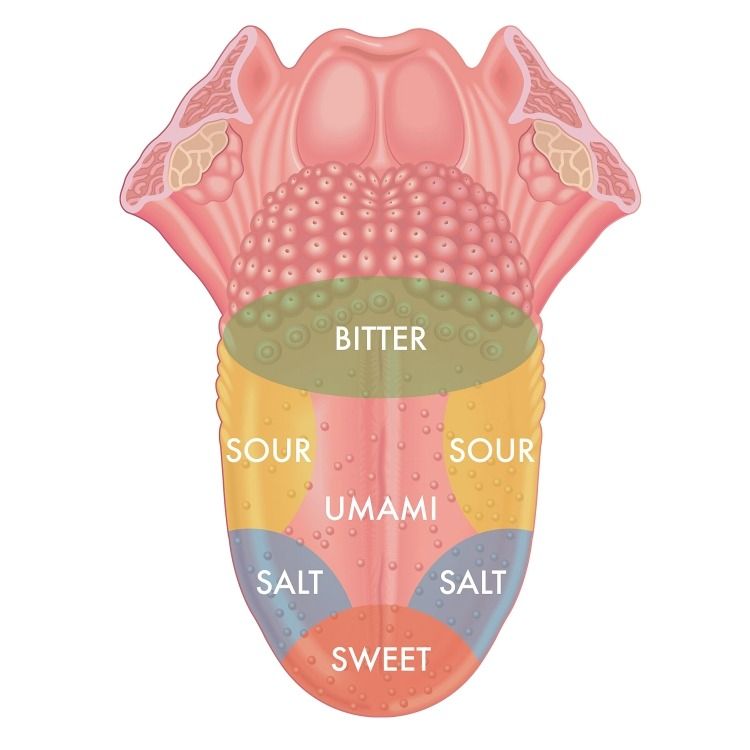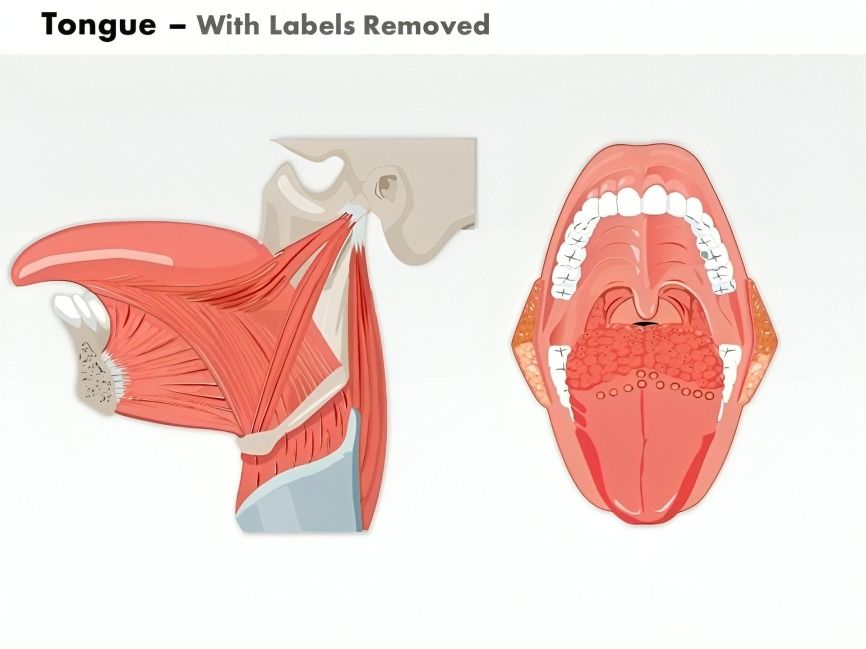
“
The oral cavity is crucial beyond respiration and digestion, serving as the primary site for speech production and sound articulation. It enables clear communication by coordinating tongue, lips, and palate movement. The oral cavity is also essential in maintaining oral health, as it houses salivary glands that help clean and protect teeth, gums, and soft tissues from infection. 1
1
1
”
The mouth is crucial for food intake, digestion, speech formation, and respiration. Teeth play a vital role by tearing and grinding food into digestible pieces. Together, these functions support essential body processes. 1
The oral cavity is crucial for articulating speech. The tongue, lips, and teeth shape sounds produced by the vocal cords, forming words and sentences vital for communication. 2

The oral cavity houses taste buds on the tongue, soft palate, and inner cheeks. These taste receptors help differentiate sweet, salty, sour, bitter, and umami flavors, enriching our eating experience.
Saliva, produced by glands in the oral cavity, plays a significant role in maintaining oral health. It helps wash away food particles, prevents tooth decay, and provides enzymes that protect against bacteria. 3
The oral cavity helps sense and react to temperature changes. Specialized nerve endings in the mouth detect hot and cold, protecting the body from consuming harmful temperatures. 4
Saliva in the oral cavity acts as a natural buffer against acidic substances introduced by food or drinks. This buffering capacity helps protect tooth enamel from acid erosion, reducing the risk of cavities and tooth sensitivity. 5
Over a lifetime, a person produces about 37,854 liters of saliva, enough to fill two swimming pools. Additionally, the average person spends around 38.5 days brushing their teeth. 6
The oral cavity acts as a front-line defense against pathogens entering the body. Saliva contains antimicrobial proteins like lysozyme, lactoferrin, and immunoglobulins that help neutralize bacteria and viruses. 7
The oral cavity is rich in nerve endings that provide tactile feedback, Which allows us to feel the texture of food, detect sharp objects, and sense discomfort, prompting protective reactions. 8
Our mouth contains about 10,000 taste buds, most located on the tongue. Interestingly, no two people have the same set of teeth, making them as unique as fingerprints.9
Tooth enamel is the hardest substance in the human body, protecting the four types of teeth: incisors, canines, premolars, and molars. Like bones, teeth are alive with their blood supply and nerves. A tooth can even die if damaged or infected. 10
Without saliva, tasting food would be impossible as it helps dissolve flavors. The inside of the mouth is home to as many bacteria as there are people on Earth. Teeth begin forming before birth but typically emerge between 6 to 12 months of age.11

The extrinsic muscles of the tongue, attached to specific regions outside it, aid in complex movements like protrusion and retraction. The tongue also has four intrinsic muscles: the superior longitudinal, inferior longitudinal, transverse, and vertical muscles.
The oral cavity is integral to facial expressions, such as smiling, frowning, and grimacing. The lips, jaw, and tongue movements reflect emotions like happiness, anger, or surprise.12
Throughout history, oral modifications such as dental decorations, tongue piercings, and lip plates have been used to express cultural identity, status, and aesthetics across civilizations. 13
Saliva helps regulate the pH levels in the mouth, maintaining an ideal range for oral tissues and teeth. A pH between 6.2 and 7.6 is necessary to avoid enamel erosion. Acidic or alkaline shifts in the mouth can lead to issues like cavities and oral discomfort.14
The oral cavity has a remarkable capacity for healing. Cuts or ulcers in the mouth heal faster than in other body parts due to the rich blood supply and the presence of saliva, which contains growth factors.15
The oral cavity is home to a diverse microbiome. Maintaining a balanced population of bacteria is vital for oral health, as disruptions can lead to conditions like bad breath and gum disease. 16
The oral cavity is involved in reflexes such as gagging and swallowing. These reflexes protect against choking or inhaling harmful substances, ensuring safe consumption of food and drink. 17
The condition of the oral cavity often reflects age-related changes. Thinning gums, receding gum lines, and tooth wear can indicate aging and overall health. Regular dental check-ups are essential for monitoring these signs and maintaining oral health. 18


